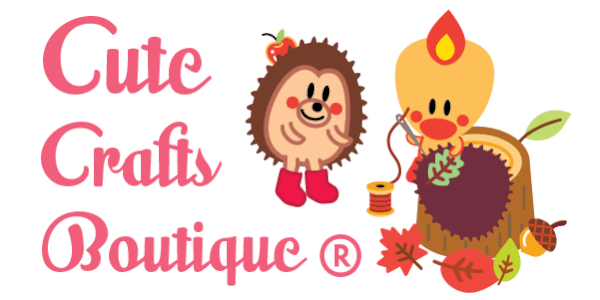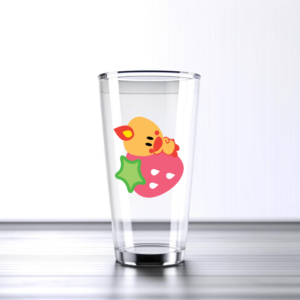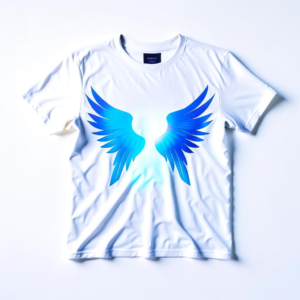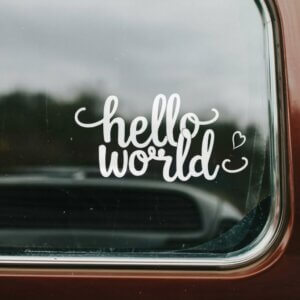Ever found yourself working on a DIY project, applying what you thought was a perfect vinyl design, only to discover later that it just won’t stick around? Wondering if Cricut Adhesive Foil is permanent?
In this post, we’ll dig into what type of vinyl it is and show you a solution to make it last longer. Stick with me.
Is Cricut Adhesive Foil Permanent?
Cricut Adhesive Foil is not permanent. Instead, it falls under the category of removable vinyl.
Adhesive foil is great for making temporary decals for indoor use.
It lets you craft stickers, labels, home decor, wall decals, and much more.
This type of vinyl is ideal for those projects where you might want to change things up down the road.
You can decorate your walls, laptops, or just about any surface that suits your creative vision.
No Residue Left Behind
One of the best features of Cricut Adhesive Foil is its ability to be removed without leaving any sticky residue behind.
So, if you decide to revamp your decor or want to change your laptop’s look, you won’t be stuck with the remnants of your previous design.
This is especially handy if you’re a bit indecisive about your design choices!
Limitations of Adhesive Foil
However, you need to know its limitations.
Cricut Adhesive Foil is not meant for outdoor projects or items that will face the elements, like mugs or signs.
These types of projects need a more permanent solution. Such as permanent vinyl.
What is Cricut adhesive foil?
Cricut Adhesive Foil Vinyl is a special type of crafting material designed for use with Cricut cutting machines.
These cutters are popular among DIY and craft enthusiasts.
Adhesive foil vinyl is a thin, flexible material with a self-adhesive backing.
Here’s what you need to know about it:
1. Material and Appearance:
Cricut Adhesive Foil Vinyl is typically made from a thin layer of metallic or colored foil adhered to a plastic backing.
It has a shiny, eye-catching appearance. So it’s perfect for adding a touch of elegance and style to various projects.
2. Adhesive Backing:
Cricut foil vinyl had a self-adhesive backing.
This means that you can peel off the liner and stick the foil vinyl directly onto a variety of smooth hard surfaces.
It adheres well to paper, card stock, glass, metal, plastic, and even wood.
3. Versatile Crafting:
This material is incredibly versatile and can be used for a wide range of creative projects.
Crafters often use it for making decals, labels, home decor, party decorations, media covers, and more.
It’s an excellent choice for adding decorative elements to various items.
4. Removability:
As I’ve mentioned earlier, Cricut Adhesive Foil Vinyl is not permanent.
It can be removed from surfaces without leaving any sticky residue behind.
This makes it ideal for projects where you might want to change the design or update your decor over time.
5. Limitations:
Again, it’s important to note that this type of vinyl is not suitable for outdoor projects or items that will be exposed to the elements.
It’s not designed to withstand long-term outdoor use.
For these applications, use a more durable permanent vinyl.
Permanent vs removable vinyl
The key difference between permanent and removable vinyl lies in their adhesive properties and longevity.
Let’s break down their features:
Permanent Vinyl:
1. Long-Lasting:
Permanent vinyl is designed to adhere to surfaces for an extended period, often several years.
It’s ideal for projects that require durability and longevity, such as outdoor signage and vehicle decals.
2. Strong Adhesion:
It has a strong adhesive backing that forms a more robust bond with the surface.
This makes it resistant to environmental factors like rain, sunlight, and temperature fluctuations.
3. Not Easily Removable:
While it’s not impossible to remove permanent vinyl, it’s more challenging to do so.
Plus, it’s likely to leave some adhesive residue on the surface.
So it’s a better choice for decals that need to remain in place for a long time.
4. Outdoor Use:
Permanent vinyl is well-suited for outdoor applications, where it can withstand exposure to the elements, including UV rays and moisture.
Removable Vinyl:
1. Short to Medium-Term Use:
Removable vinyl, like Cricut Adhesive Foil, on the other hand, is designed for short to medium-term use.
It’s intended for projects that may need to be changed or updated over time, like wall decals or temporary event signage.
2. Gentle Adhesion:
This vinyl has a gentler adhesive, which allows for easy removal from surfaces without leaving behind sticky residue.
So it’s suitable for interior decorating and creative endeavors where you may want to change the design often.
3. Versatility:
It’s a versatile choice for various crafting projects, including home decor, scrapbooking, and personalized gifts.
Basically, for any projects where you want to experiment and change things without the commitment of a permanent bond.
4. Not for Harsh Conditions:
Removable vinyl is not meant for outdoor use or surfaces that will be exposed to harsh weather conditions.
This is because it may not withstand them as well as permanent vinyl would.
The choice between permanent and removable vinyl depends on your specific project’s requirements.
If you need a long-lasting, weather-resistant solution, permanent vinyl is the way to go.
But if you want the flexibility to change your designs or need an easily removable option, then removable vinyl is the better choice for your creative endeavors.
How to tell if your vinyl is permanent of removable
Here are some ways to find out which type of vinyl you’re working with, such a Cricut Adhesive Foil:
1. Check the Packaging:
The easiest way to determine the type of vinyl is to look at the packaging or label.
Manufacturers usually clearly state whether the vinyl is permanent or removable.
2. Read the Product Description:
If you’re purchasing vinyl online, read the product description carefully.
The description should provide all the information about the vinyl’s adhesive properties.
3. Feel the Adhesive:
Gently touch the adhesive side of the vinyl.
Permanent vinyl has a stronger, tackier adhesive.
While removable vinyl has a gentler, less aggressive feel.
4. Test a Small Piece:
If you’re still unsure, cut a small piece of the vinyl and apply it to a test surface.
Try to remove it after a short period of time.
If it comes off without leaving residue, it’s likely removable vinyl.
If it’s difficult to remove or leaves sticky residue, it’s probably permanent vinyl.
How to Ensure That Cricut Adhesive Foil has a More Permanent Bond to Surface
Here’s how you can make sure that your Cricut Adhesive Foil stays put for the long haul:
1. Choose the Right Surface:
One of the critical factors in ensuring a more permanent bond is selecting the appropriate surface.
Cricut Adhesive Foil performs best on smooth, clean, and dry surfaces.
If you’re aiming for a long-lasting bond, make sure the surface is free from dust, oils, or any other contaminants that might hinder the adhesive’s effectiveness.
2. Surface Preparation Matters:
Give your project a head start by preparing the surface before applying the foil.
It’s like priming a canvas before painting.
If the surface is too textured or uneven, consider sanding it down slightly to create a smoother foundation for your foil.
Always clean the surface with a lint-free wipe and make sure it’s dry before you apply your decal.
3. Proper Application Technique:
The way you apply the foil can really impact its longevity.
Use a gentle but firm touch to press the foil onto the surface to make it adhere evenly.
A handy tool for this job is a scraper or squeegee.
It helps to remove any air bubbles and secure a solid bond.
4. Smooth and Even Application:
Take your time during the application process.
Smooth out the foil carefully, working from one end to the other.
This helps to prevent any creases or bubbles that could weaken the bond over time.
5. Appropriate Conditions:
Consider the environmental conditions in which your project will stay.
If you can, use it indoors rather than exposing your foil decal to the elements.
Cricut Adhesive Foil is not meant for outdoor use, and harsh conditions can affect its longevity.
6. Avoid Excessive Handling:
Once you’ve applied the foil, try to avoid too much handling or contact with the design.
Frequent rubbing or touching can slowly wear down the adhesive, reducing its longevity.
7. Back to the Basics:
Remember the fundamental rule – Cricut Adhesive Foil is not designed for projects that need to be permanent.
Like outdoor signage or items exposed to rough use, such as mugs.
For those applications, permanent vinyl is the way to go.
Can Cricut Adhesive Foil be used outdoors?
Cricut Adhesive Foil is not suitable for outdoor projects.
It’s designed for indoor use and may not withstand exposure to the elements like rain, sunlight, and extreme temperatures.
For outdoor applications, consider using permanent vinyl.
How long can Cricut Adhesive Foil last on a surface?
Its longevity depends on the surface it’s applied to and the conditions it’s exposed to.
In optimal indoor conditions, it can last for up to several years without leaving residue.
But again, it’s not intended for permanent applications.
Can I use Cricut Adhesive Foil on mugs or other dishware?
No, this vinyl is not recommended for use on mugs or dishware.
It’s not food-safe or designed to withstand the frequent washing and handling that dishware undergoes.
For customizing mugs, consider heat-transfer vinyl.
Can I reposition Cricut Adhesive Foil after application?
While this foil vinyl is designed for a firm bond, you can reposition it during the initial application.
If you’re not happy with the placement, gently lift and reapply it.
However, it may lose some adhesive strength after repositioning.
How do I remove Cricut Adhesive Foil without leaving residue?
This vinyl removes really clean. I’ve never had any issues with it.
To take it off a surface, start from one corner and peel it away slowly.
If any residue is left, use adhesive removers like Goo Gone or rubbing alcohol to clean the surface.
Can I layer Cricut Adhesive Foil for more complex designs?
Yes, you can layer it.
Just make sure that each layer is applied smoothly and sticks properly.
Keep in mind that the more layers you add, the harder it will be to remove the design later.
Are there any specific care instructions for projects made with Cricut Adhesive Foil?
Avoid too much wear and tear, rubbing, or rough handling.
Especially for items with intricate foil designs, where tiny details might come off.
For cleaning, use a gentle, non-abrasive method.
Can Cricut Adhesive Foil be used with all Cricut cutting machines?
Yes, it’s compatible with most Cricut cutting machines, including the Explore, Maker, and Joy.
You can also use it with other cutting machines like Silhouette.
Can I use Cricut Adhesive Foil on textured or rough surfaces?
Any Cricut adhesive vinyl sticks best to smooth, clean surfaces.
Textured or rough surfaces will provide a less secure bond.
Final thoughts
While Cricut Adhesive Foil may not be permanent, it is still a versatile and useful tool for creating temporary decals for indoor use.
Whether you’re looking to add some fun designs to your wall or customize your laptop, this removable vinyl is easy to use and leaves no residue when removed.
So don’t be afraid to get creative and try out some designs with Cricut Adhesive Foil!







